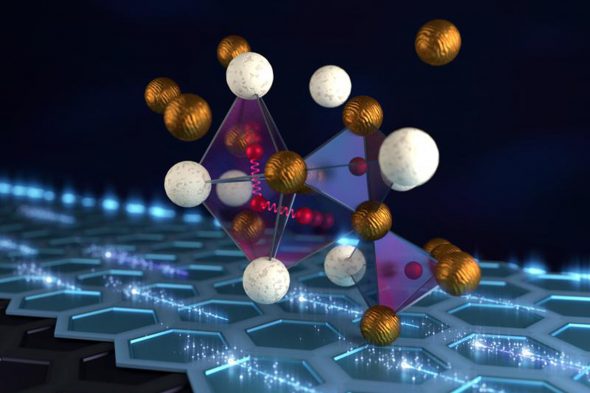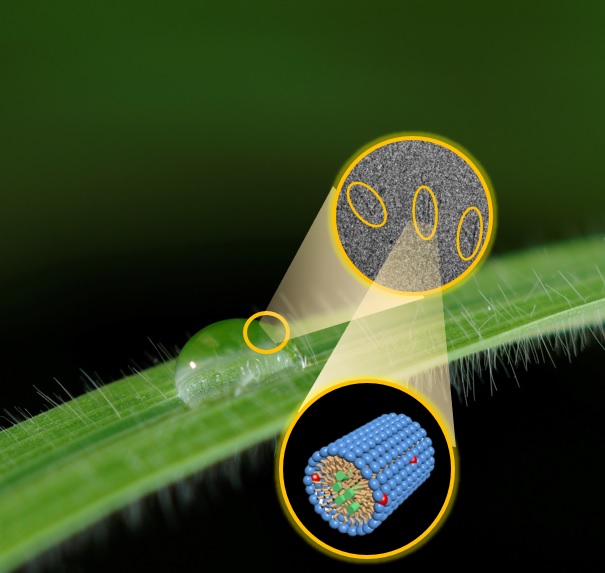There are many challenges in the energy sector, predominantly focused on mitigating the global impacts of planetary warming and climate change. In order to meet our international commitments to reduce CO2 emissions, the UK needs to undergo a rapid transition to low-carbon/carbon-neutral and sustainable energy sources for transport, and domestic and industrial heat and power.
The UK Government recently announced their ten point plan for a green industrial revolution. Using these themes, this is an overview of recent work at ISIS that is contributing to tackling climate change.
 Offshore wind
Offshore wind
The government aims to produce enough offshore wind to power every home, quadrupling production to 40GW by 2030. Assessing the structural integrity of wind turbine foundations is a key concern for the energy industry.
With this motivation in mind, a group of researchers from the UK and Norway visited ISIS Neutron and Muon Source to perform some advanced world leading experiments on the most popular type of offshore wind turbine foundation – the monopile.
Nuclear
The UK government aims to advance nuclear as a clean energy source both across large scale nuclear and developing the next generation of small and advanced reactors.
Using ISIS for studying engineering components has been extremely useful for collaborators in the nuclear industry, who have studied reactor materials and graphite moderators. AREVA used our Engin-X beamline to study the effect of new welding techniques, and EDF have used our Sans2D beamline to look at how they could extend the life of Advanced Gas Cooler Reactors.
Ensuring the safety of these reactors is also a critical area of research, with groups using ISIS to study how materials age inside a nuclear reactor, and developing new methods for detecting hazardous radioisotopes.
We also work with other research facilities across the Harwell Campus, including collaborating with Diamond Light Source on the use of Metal Organic Frameworks for application in the nuclear industry.
As well as these examples, we have collaborated with UKAEA to establish a technique for testing prototypes before manufacturing hundreds of thousands of monoblocks for use in the fusion reactor DEMO.
Hydrogen
 Working with industry, the government aims to generate 5GW of low carbon hydrogen production capacity by 2030 for industry, transport, power and homes, and aims to develop the first town heated entirely by hydrogen by the end of the decade.
Working with industry, the government aims to generate 5GW of low carbon hydrogen production capacity by 2030 for industry, transport, power and homes, and aims to develop the first town heated entirely by hydrogen by the end of the decade.
A lot of work has been done at ISIS in research areas that are crucial to the advancement of the hydrogen economy. The unique interaction between neutrons and hydrogen enables investigations that are not possible with other techniques, making neutron scattering an ideal tool for the study of hydrogen storage materials.
Recent work has looked at metal hydrides for hydrogen storage, oxide materials for fuel cell components and novel ways to manufacture these materials. The unique view of muons has also been exploited by Toyota, who have used ISIS to study hydrogen storage systems during cycling.
If hydrogen is to become a common energy vector in the UK, it is crucial for safety that accurate hydrogen sensors are commonly available. As well as hydrogen storage, fuel cell membranes have also been studied at ISIS, with neutron studies key to the development of new formulations.
In parallel with hydrogen technology, scientists at ISIS are also studying the feasibility of developing an ammonia economy. This work includes the design and build of a green ammonia plant, joint with Siemens, based at the Rutherford Appleton Lab.
Carbon capture
The government wants the UK to become a world-leader in technology to capture and store harmful emissions away from the atmosphere, with a target to remove 10MT of carbon dioxide by 2030.
As well as looking at whether shale could be used to store carbon dioxide, researchers have investigated the carbon storage properties of metal organic frameworks, which could be used as carbon stores.
Earlier this year, research was published which used an ISIS beamline to measure solvents used in carbon capture technologies, to investigate what was occurring at the atomic level when post-combustion capture fails.
Electric vehicles

The government aims to accelerate the transition to electric vehicles, and transform national infrastructure to better support electric vehicles. The area of battery research is crucial to the widespread use of electric vehicles.
Researchers regularly come to use our beamlines to study new materials for use in batteries. This article gives an overview of some of this work, with a recent review covering the impact of muon techniques on the development of materials with applications in energy.
New imaging techniques enable us to look inside a battery, to see where issues are occurring that limit performance.
Lithium-ion batteries are commonly used in electric vehicles, but we also have enabled research into the possibility of using sodium or magnesium instead, as these elements are more readily available. Another alternative to conventional batteries is the use of a solid electrolyte to improve the safety and the amount of energy that the battery can store.
 Nature
Nature
As part of the green industrial strategy, the government wants to protect and restore our natural environment. In 2019, researchers from the Royal Botanic Gardens, Kew, came to ISIS to trial a technique that would enable them to determine how long they can store seeds for.
Their store is the most biodiverse on the planet, holding seeds of plants of known use, for example to a specific local community, as well as seeds of endangered plants and some whose value is yet to be discovered.
Public transport, cycling and walking
Making cycling and walking more attractive ways to travel and investing in zero-emission public transport of the future.
Every five years or so, every wheel on every train in the UK has to be replaced. Maintenance and renewal of train wheels make up a significant proportion of the cost of our rolling stock. In everyday use the wheels are subjected to stresses and strains that can cause cracks to develop, particularly in the wheel rims. A group from the University of Huddersfield used Engin-X at ISIS to study new and used train wheels to understand how cracks begin and spread. Their work is funded by a consortium including the Rail Safety and Standards Board, the Association of Train Operating Companies, Siemens, Lucchini, and EPSRC.
Image Credits
Wind and Electric Car: Pixabay
Hydrogen: Illustration of a zirconium vanadium hydride atomic structure at near ambient conditions as determined using neutron vibrational spectroscopy and the Titan supercomputer at Oak Ridge National Laboratory. The lattice is comprised of vanadium atoms (in gold) and zirconium atoms (in white) enclosing hydrogen atoms (in red). Credit: Jill Hemman/Oak Ridge National Laboratory, U.S. Dept. of Energy
Nature: An image showing wheat waxes (green) solubilised inside a nonionic surfactant micelle in order to allow for the release of pesticides (red), provided by Xuzhi Hu & Jian Lu from the University of Manchester
